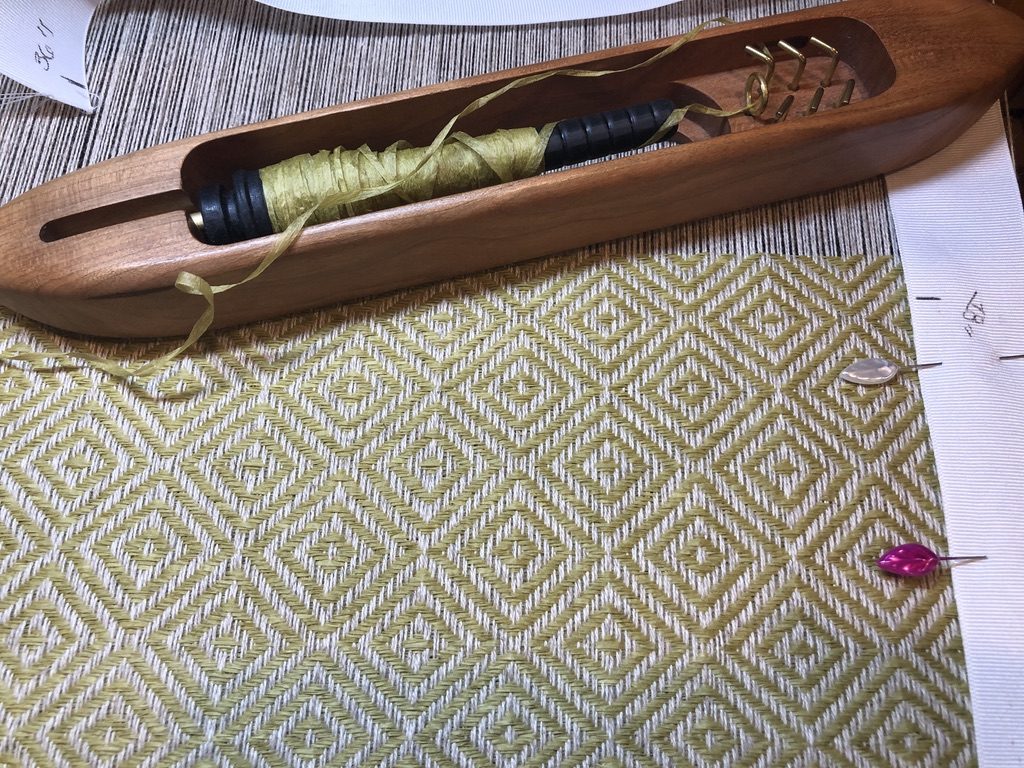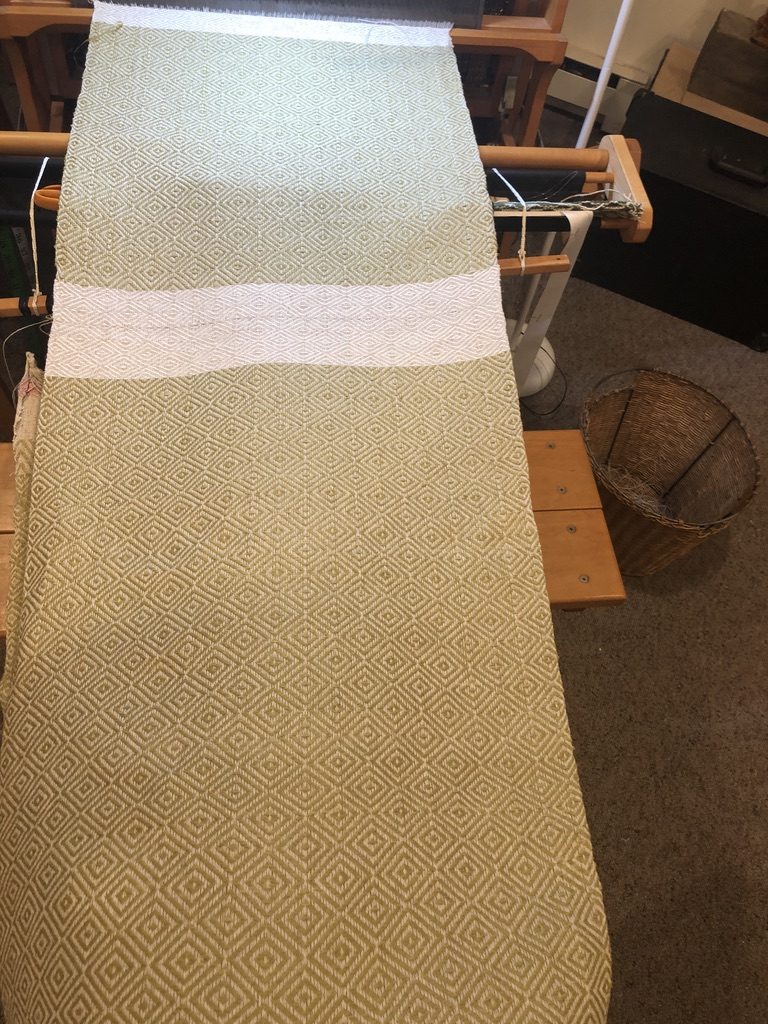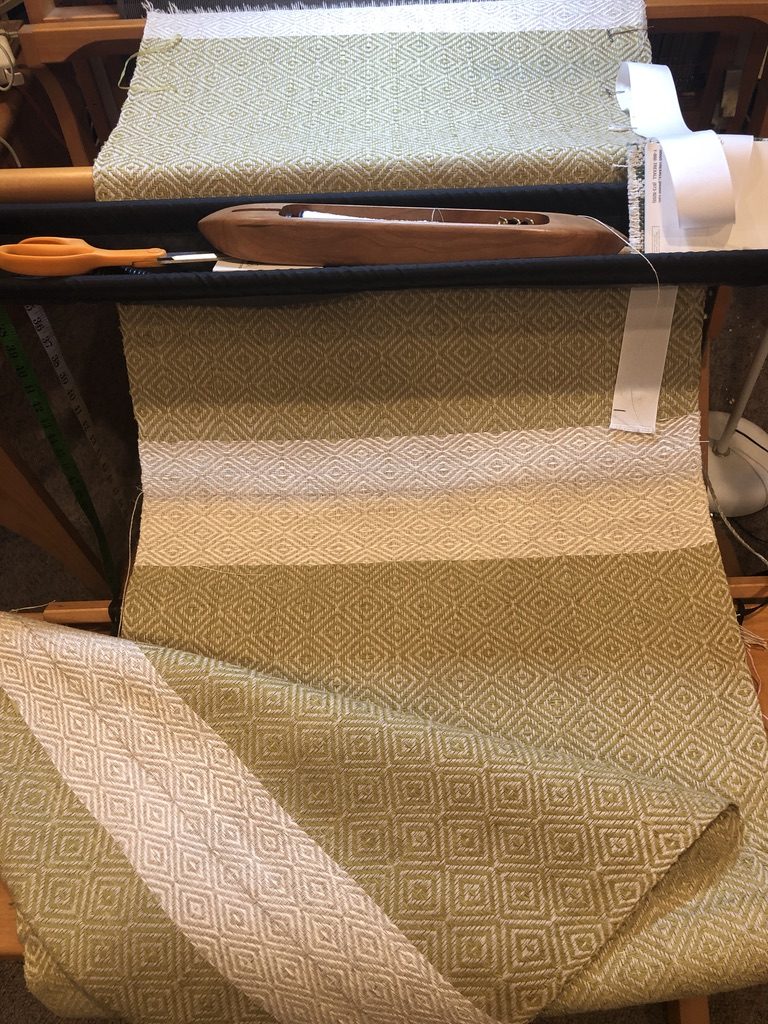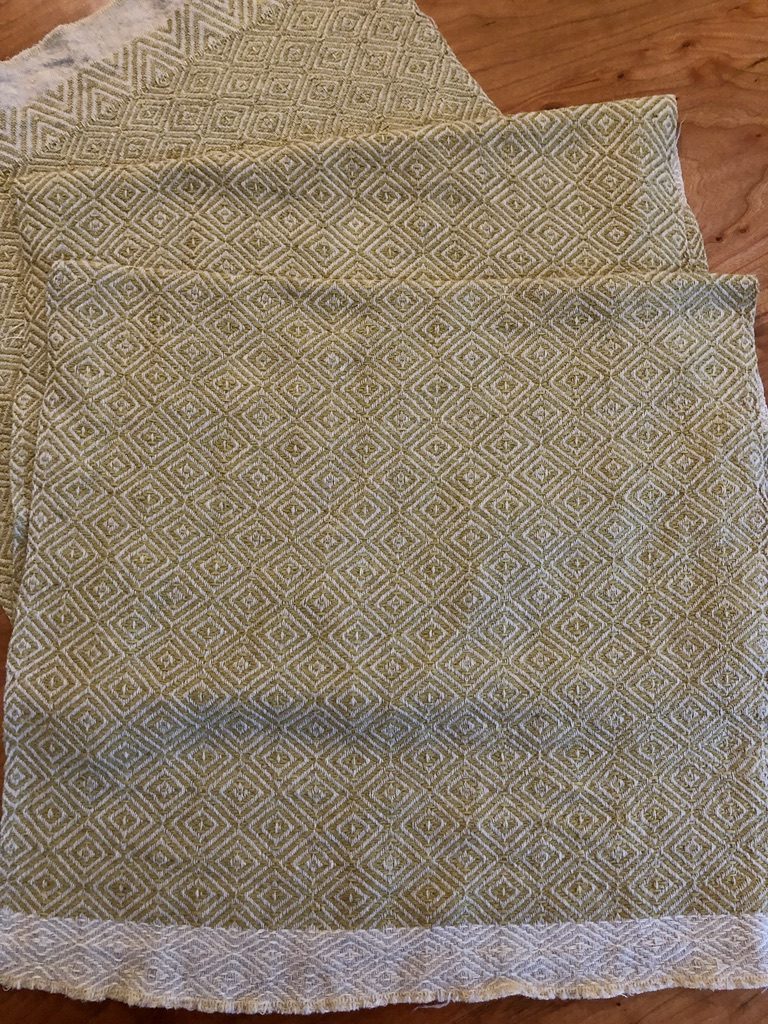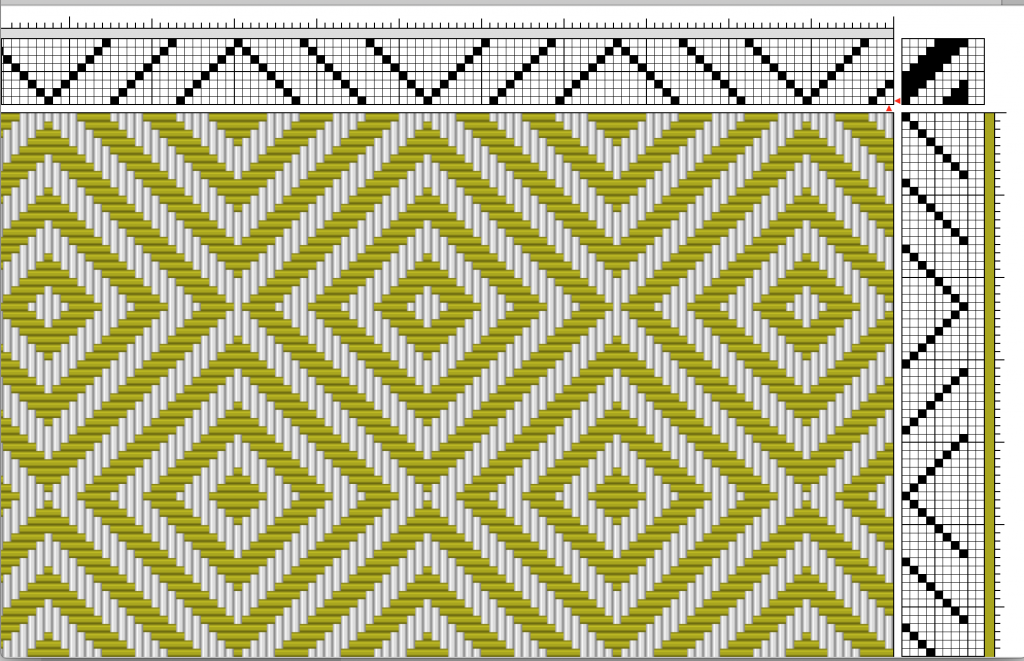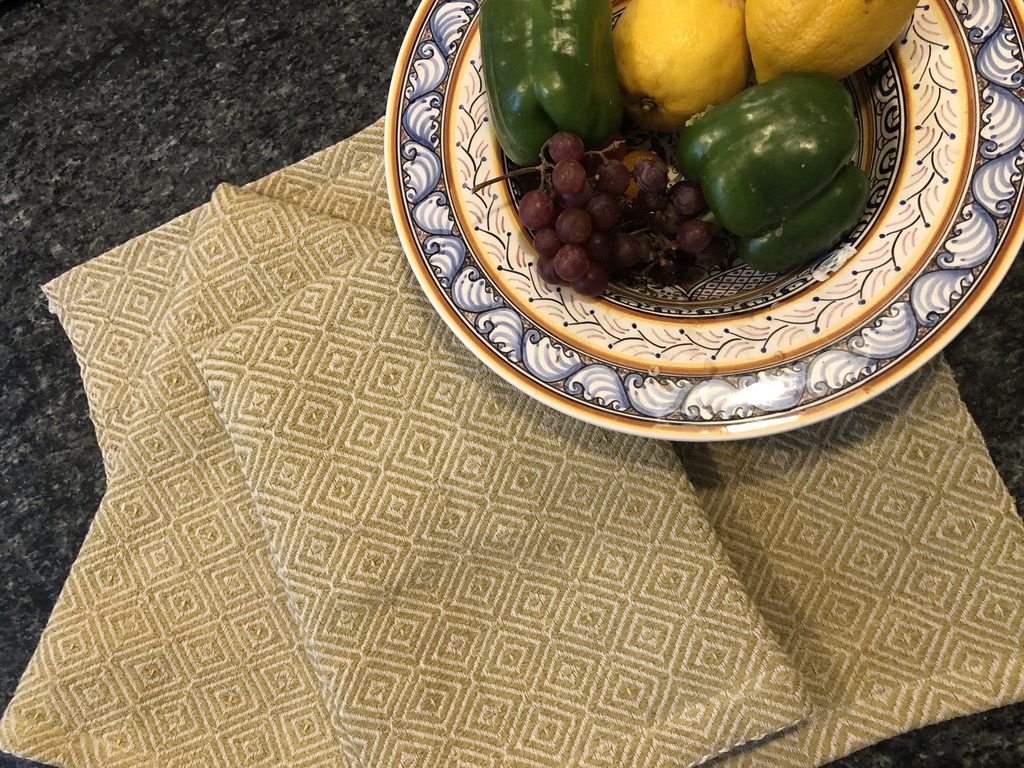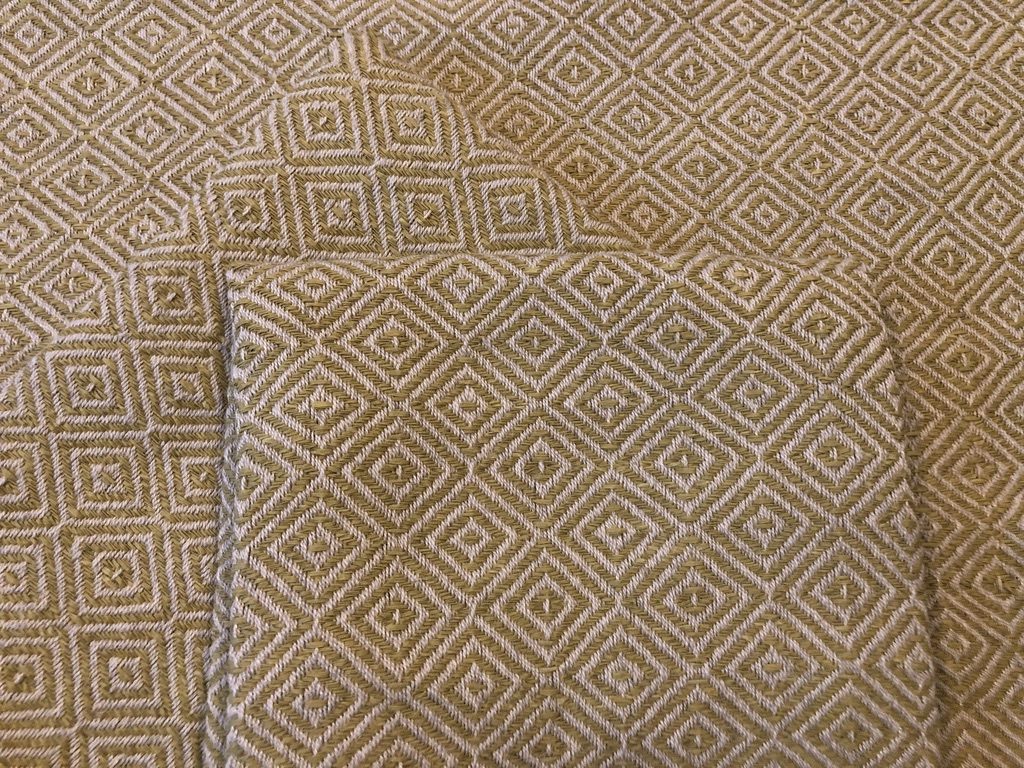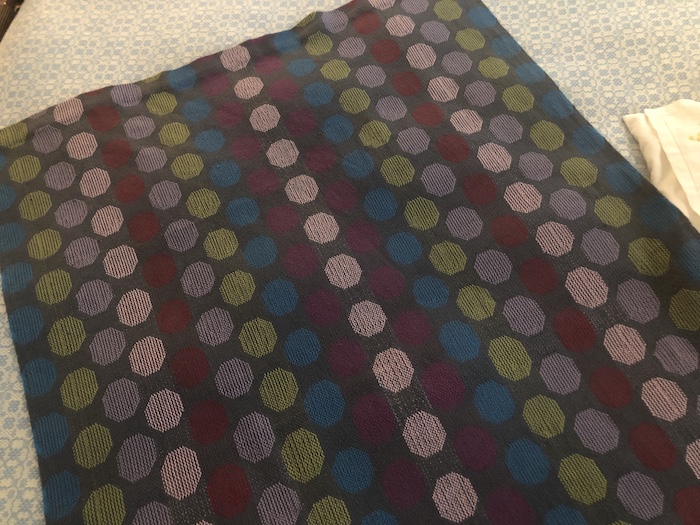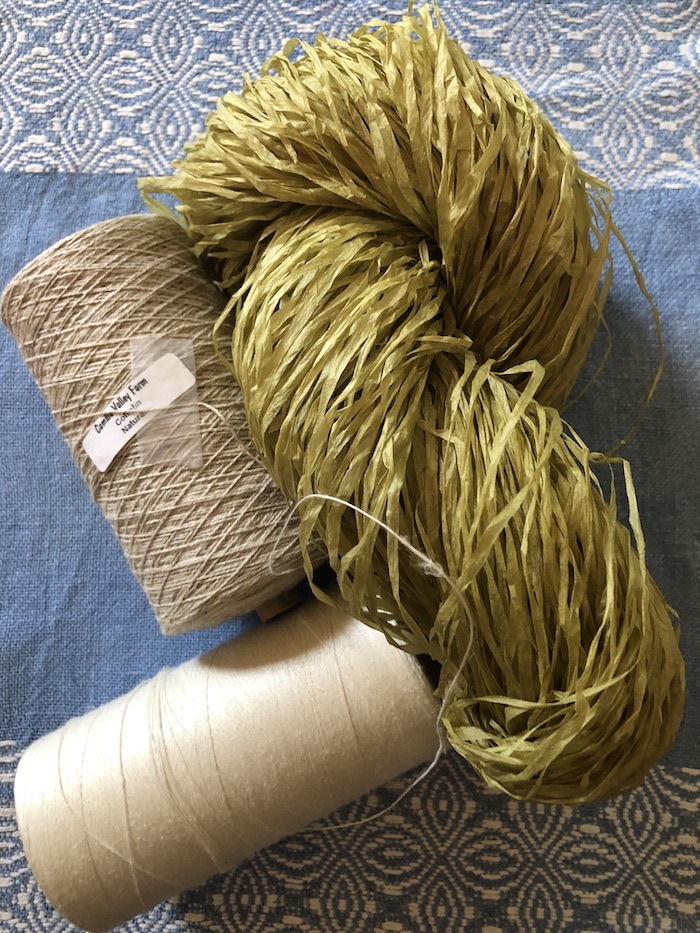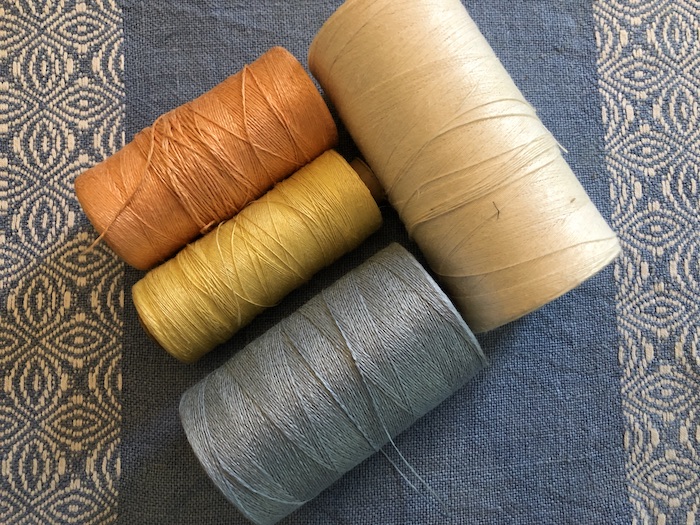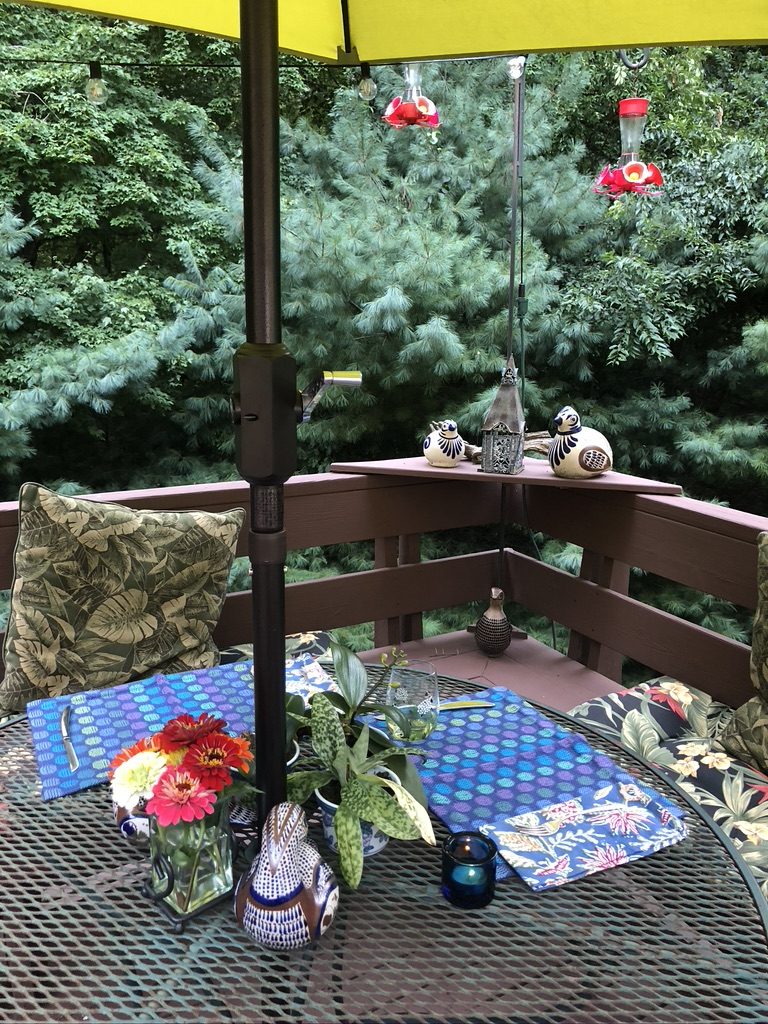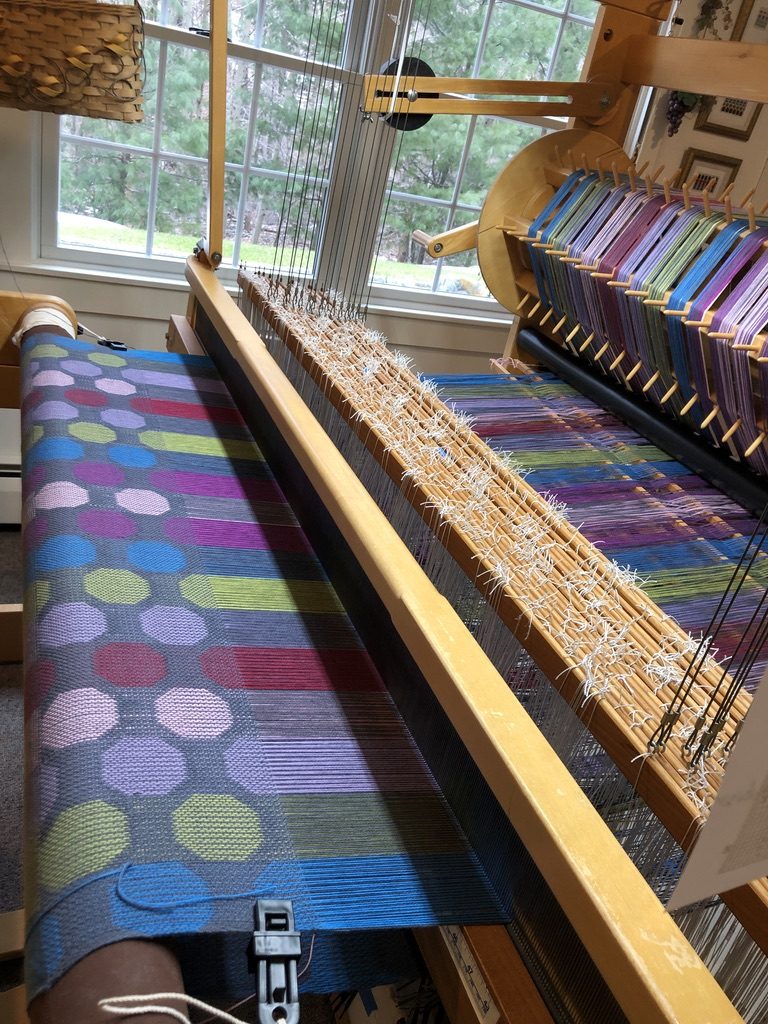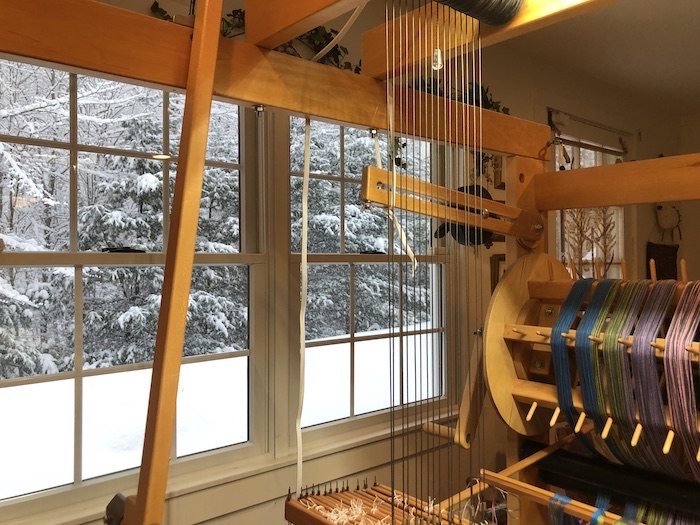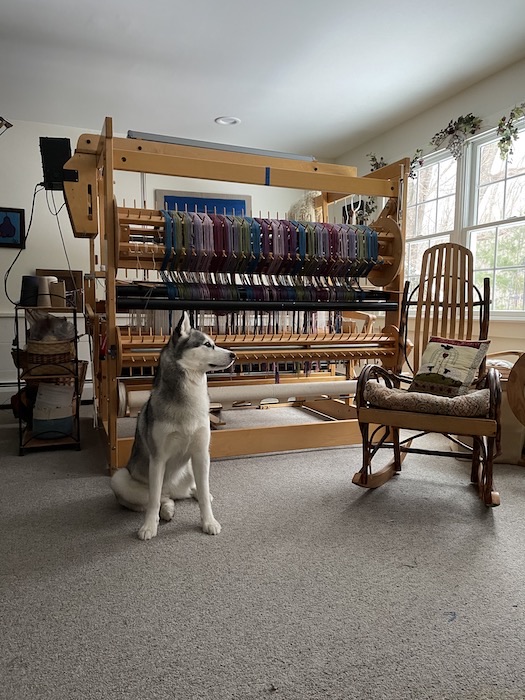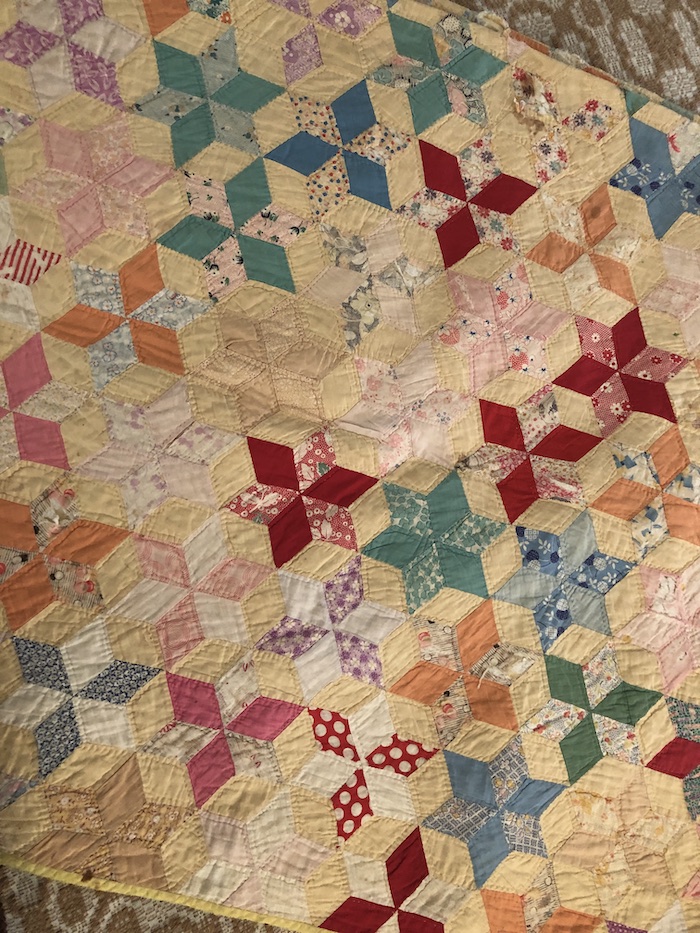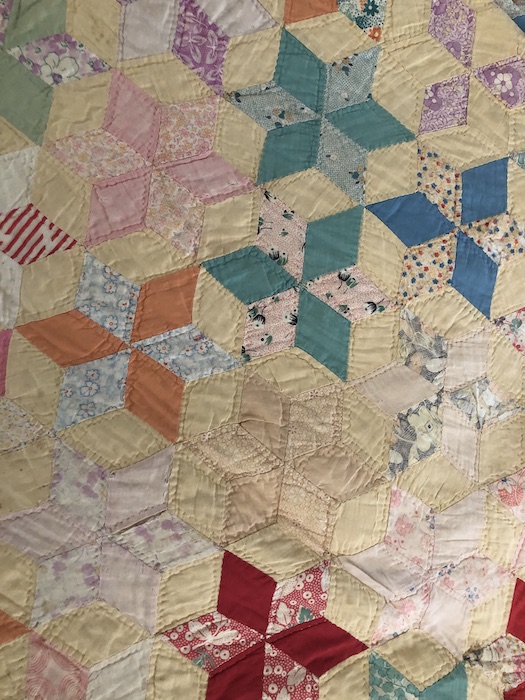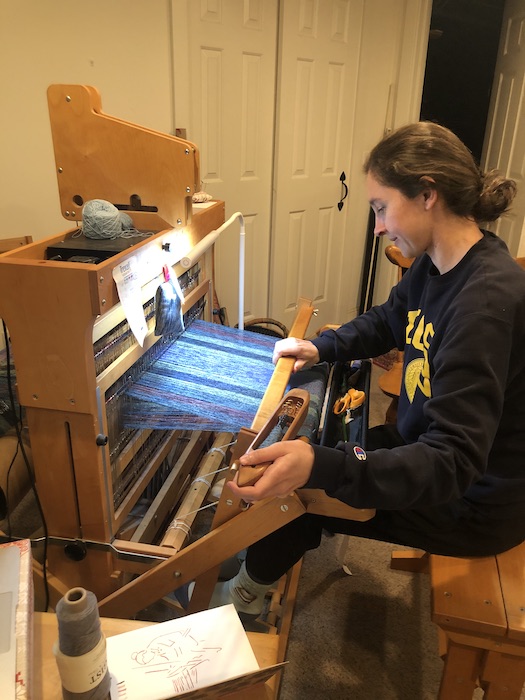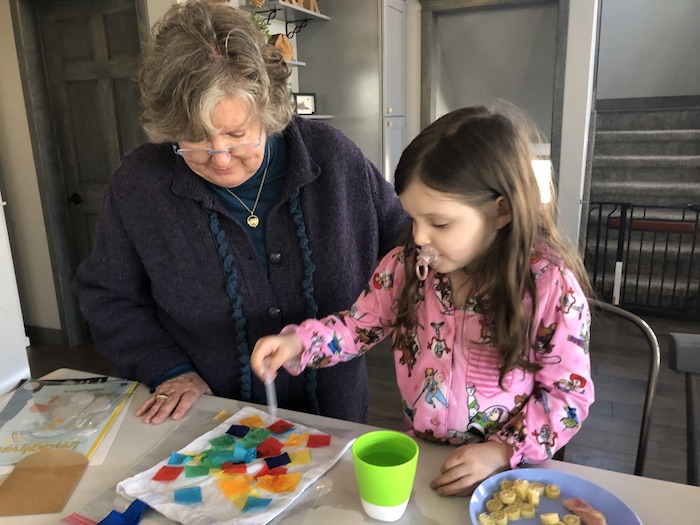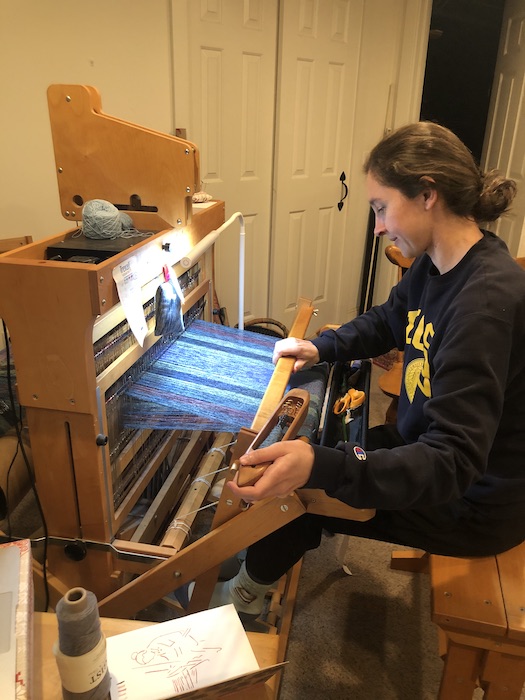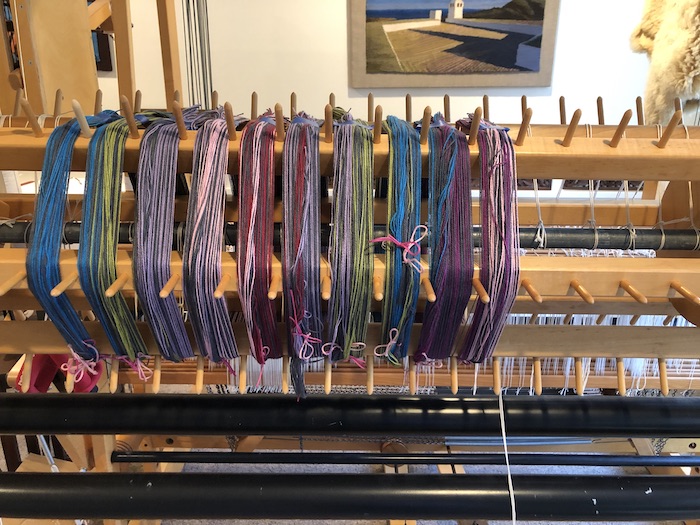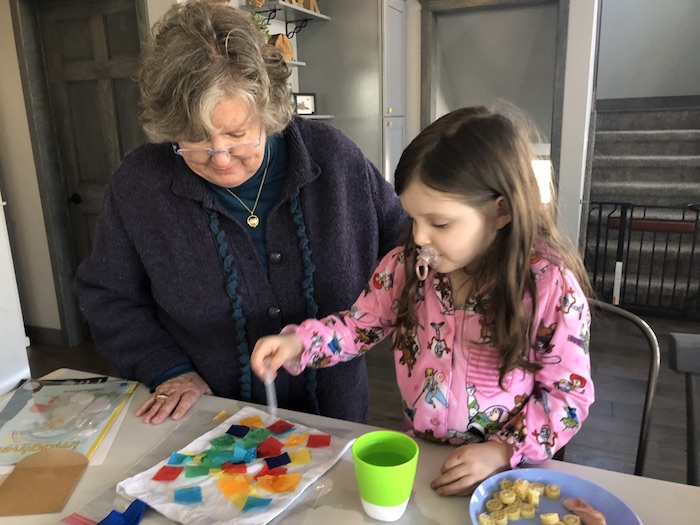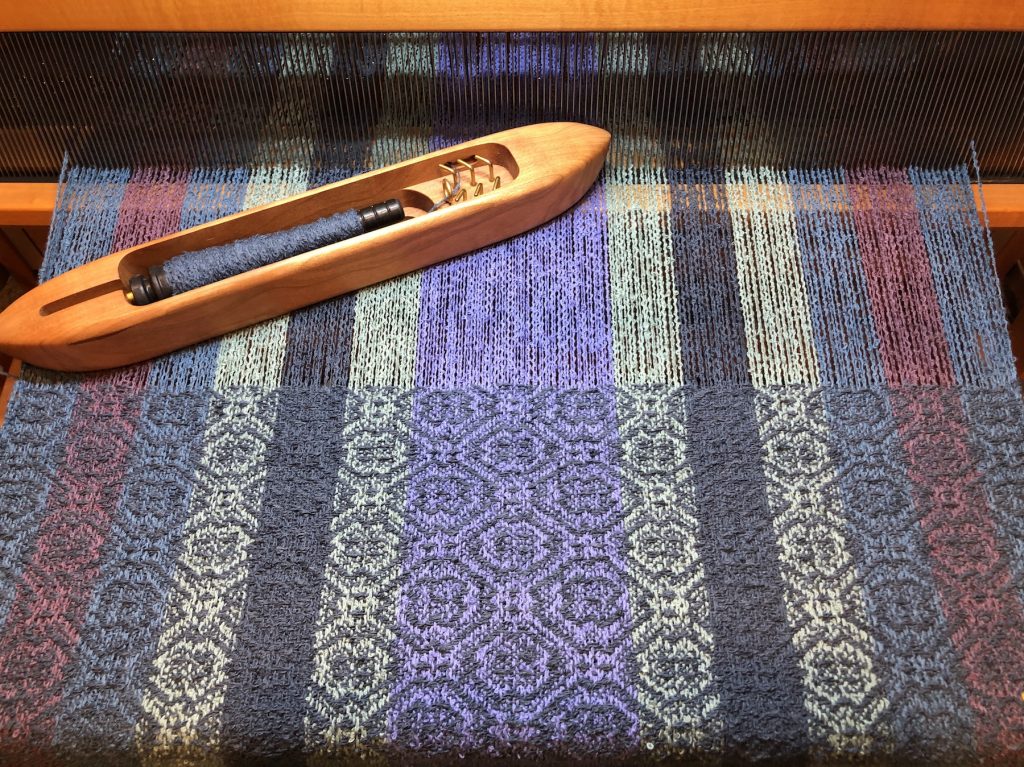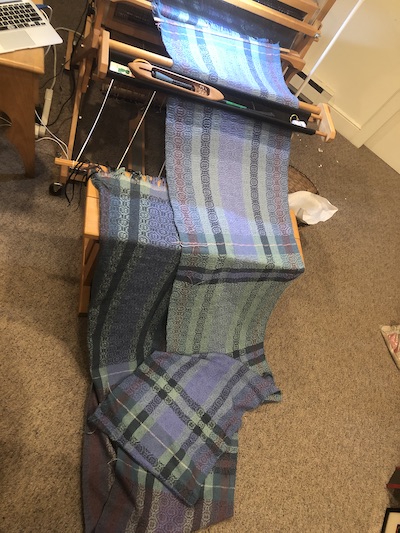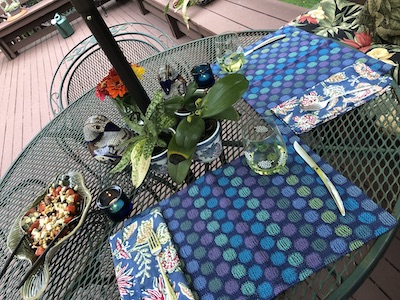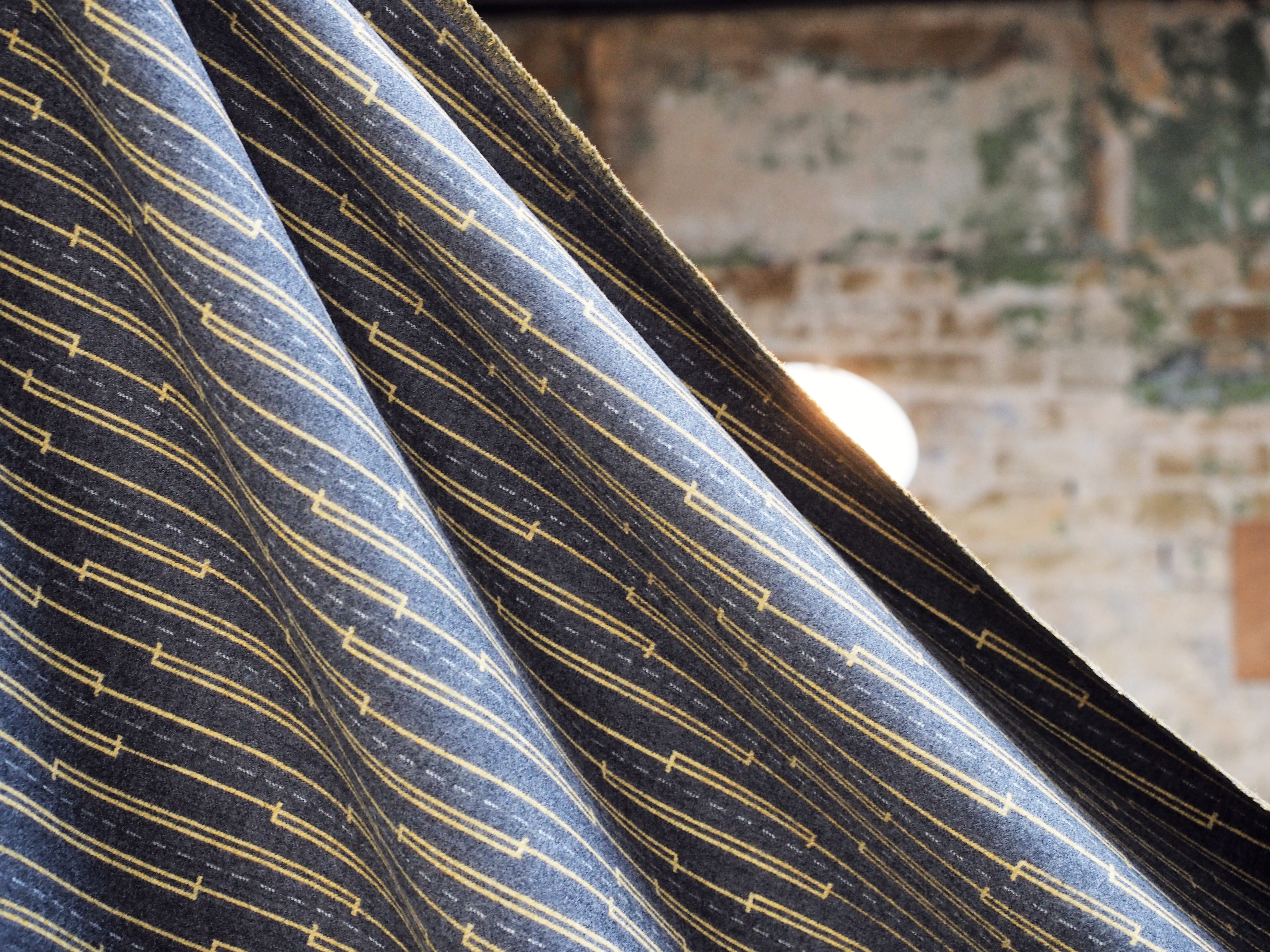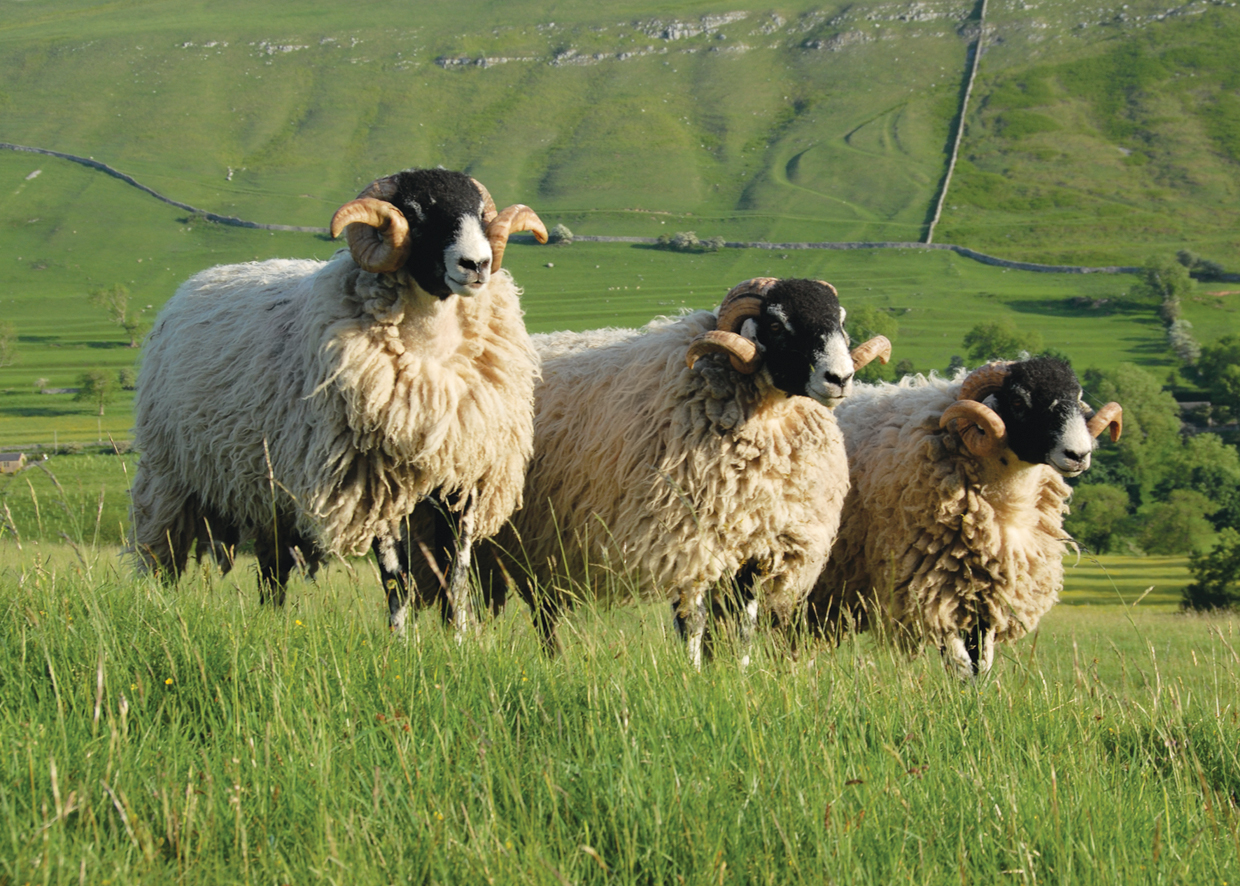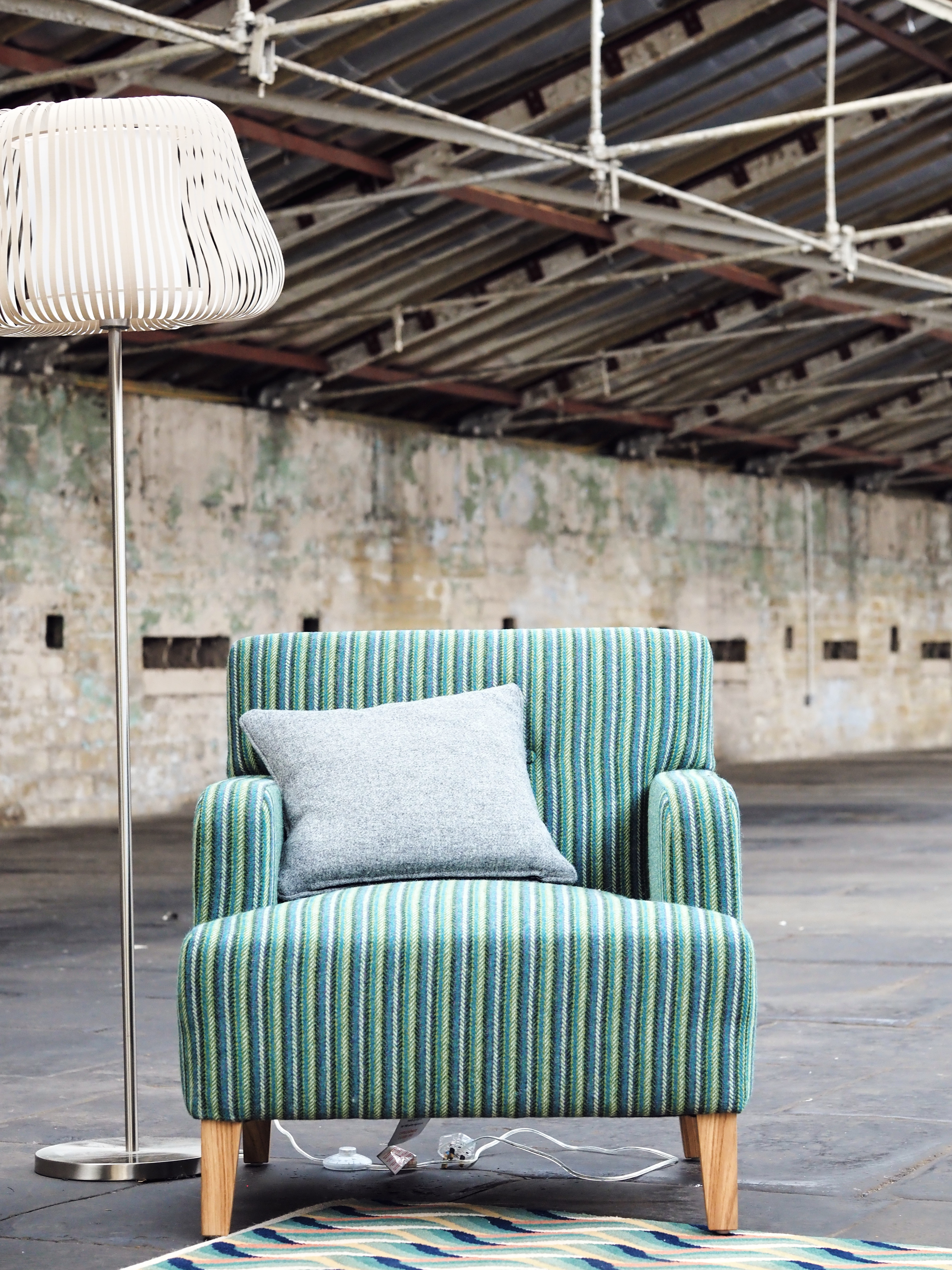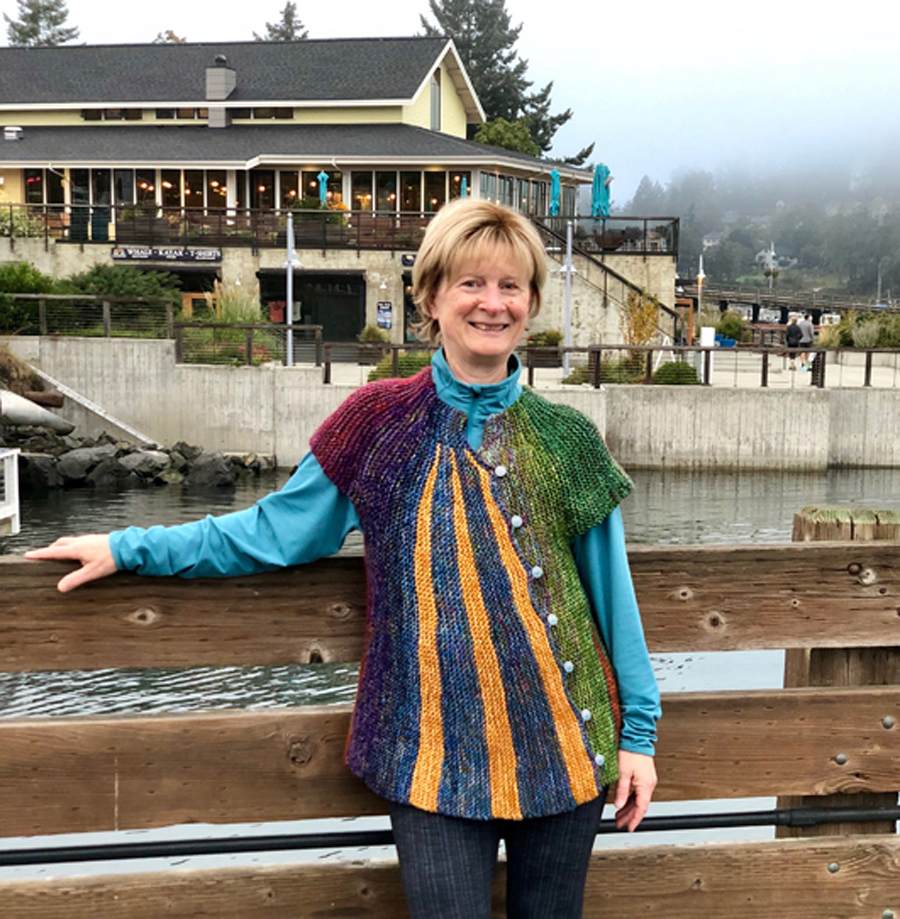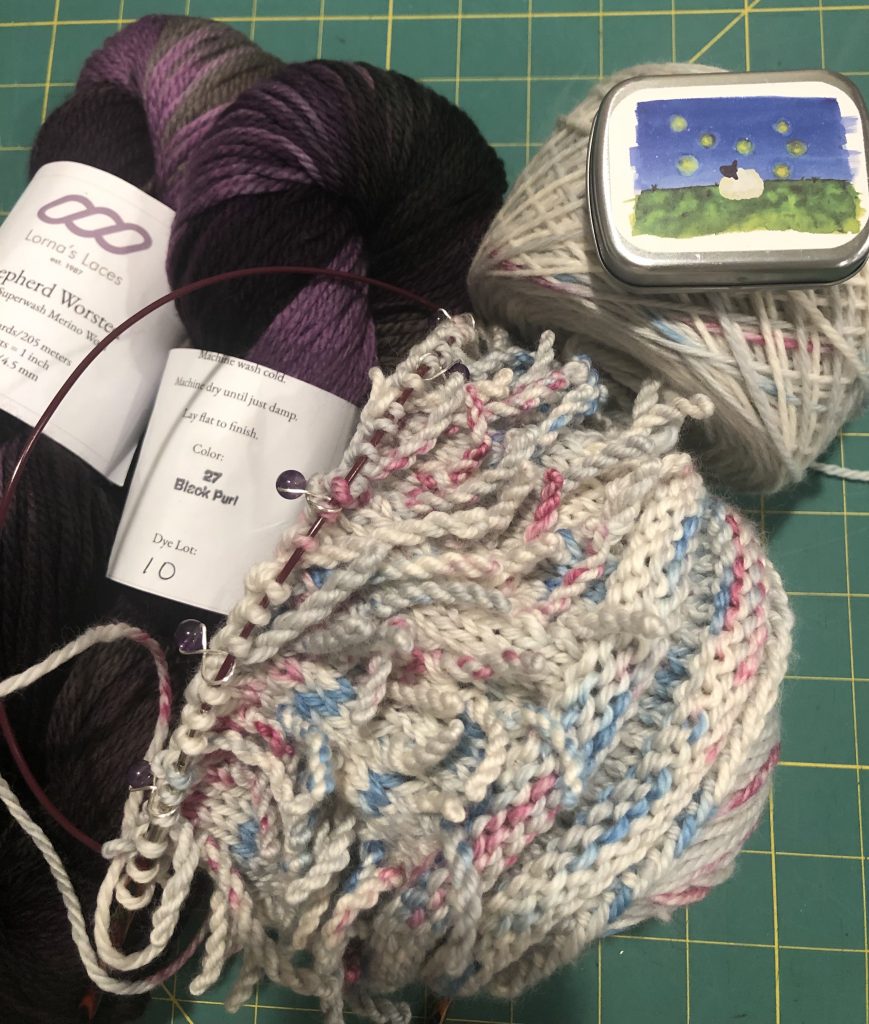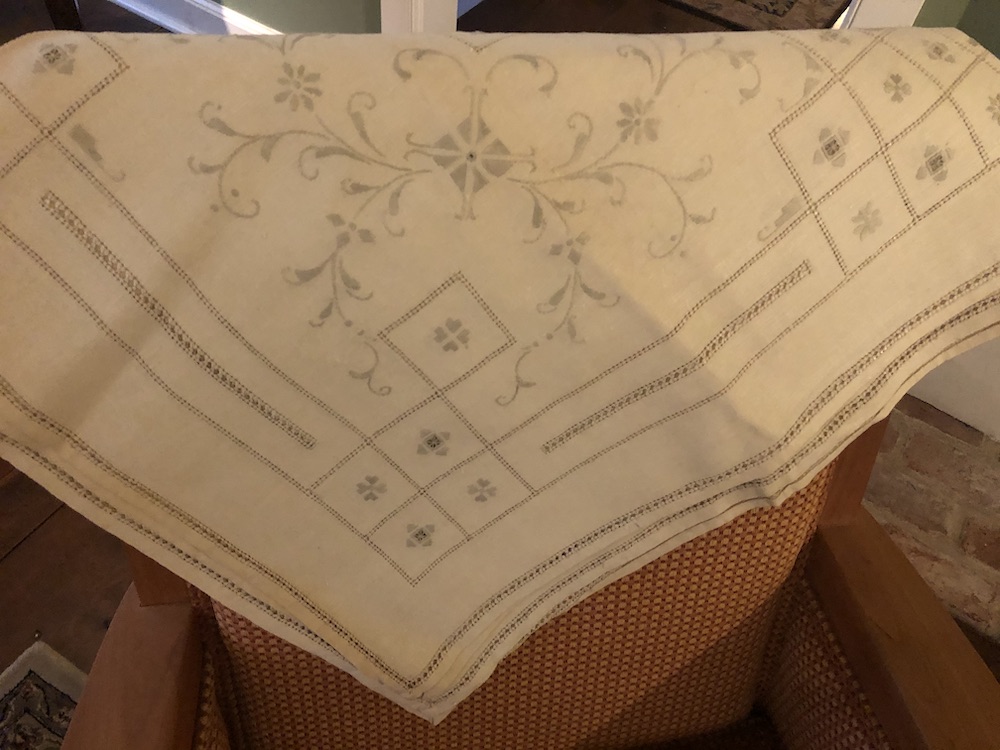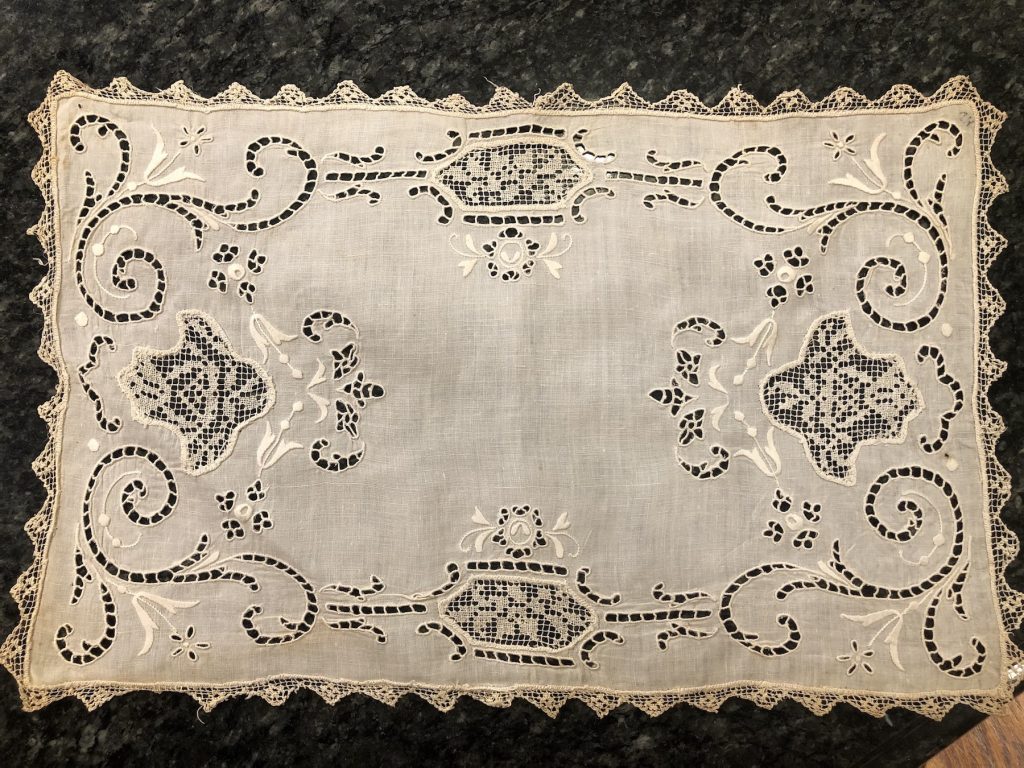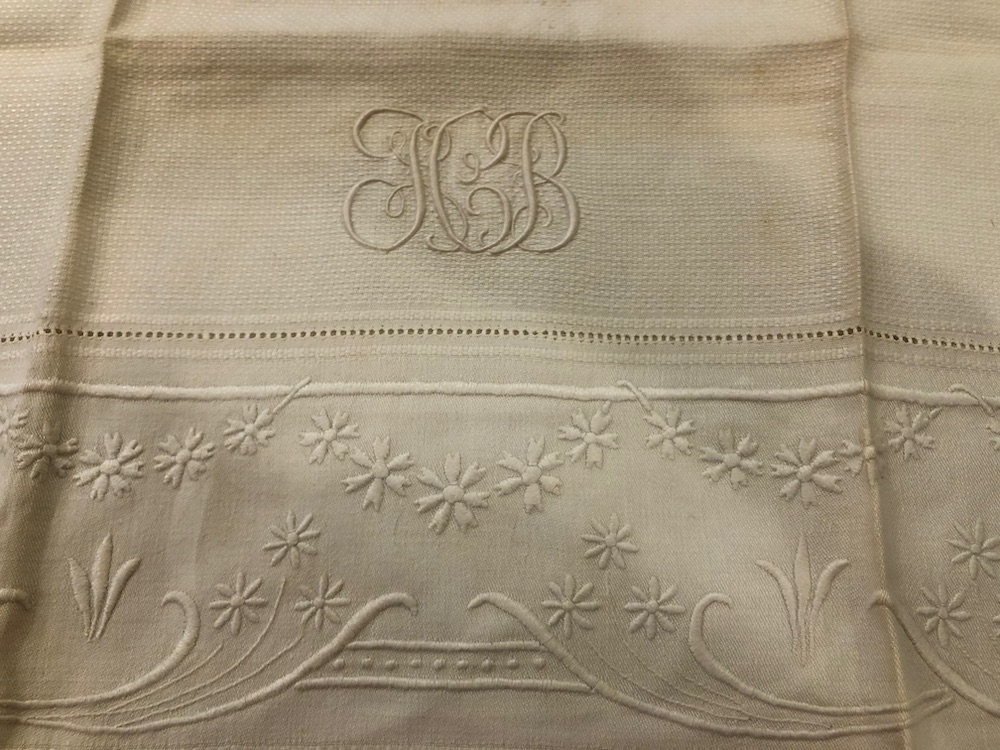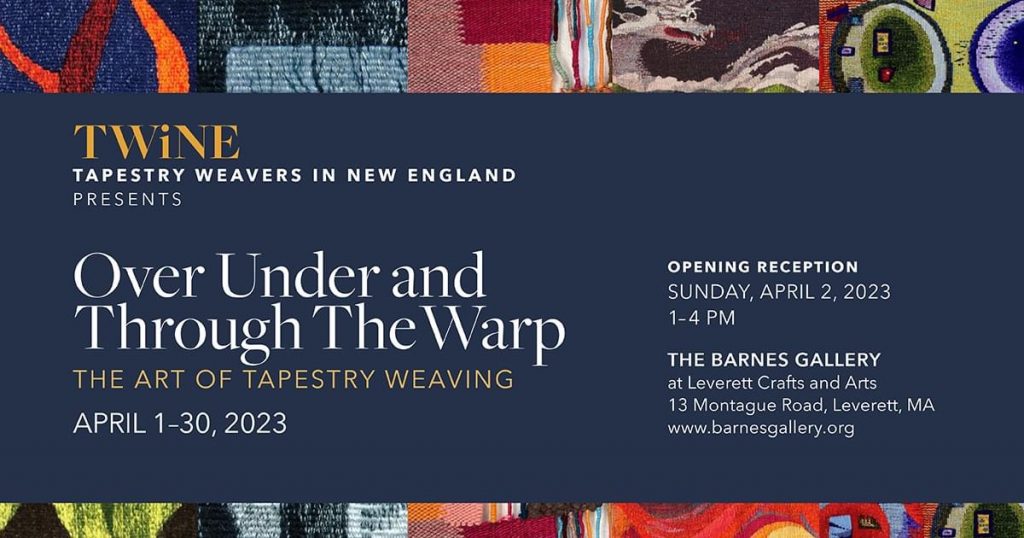There is more paper yarn to choose from on Habu Textile’s site. I wanted to see what an indigo dyed paper yarn might inspire. With all the colors on the site, Takako Ueki, the owner, warns that the colors I might choose may not actually look like they do on my monitor. That’s a worry, but unavoidable for online purchases.
Another paper yarn on the site is called “Shigoki” (n-14 Shigoki paper) which comes in some interesting colors including a pale blue called ‘water.’ It is also 100% linen paper, and the put up is 1.7 oz, and the yardage is 285 yards. That seems too heavy for what I hope to do with it. It does not look any heavier in the photo from the website, but I have to trust the yardage.

In the long run I ordered two skeins of n-73 indigo linen paper. The color is “mizu.” I wonder what that means in Japanese. It is dyed with natural indigo, and the put-up is 476 yards for 1.7 oz skein. That’s twice as fine as the n-14, and the color is closer to the blue I envision…at least on my monitor! (Ha! I just googled ‘mizu,’ and it means ‘water.’)
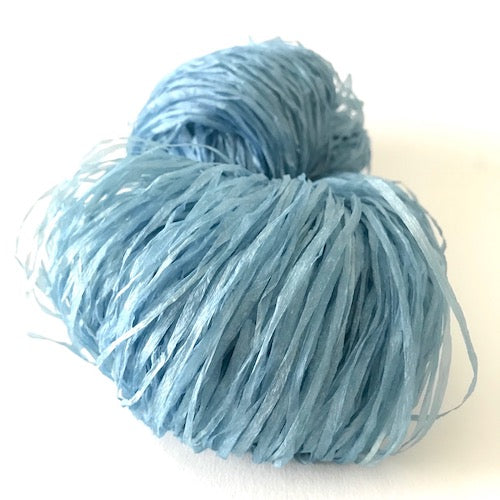
I have to wonder why Shosenshi (n-60), which is 100% linen paper with the same yardage per ounce as Indigo Linen Paper (n-73), is less than half the price. Could it be the dyeing process? Shosenshi is $29.50 per 1.7 oz skein, and Indigo Linen Paper is $67.00 per 1.7 oz skein. My placemats will be very dear, indeed! I justified this by noting that my current blue linen placemats were made in the mid 1990s and still look new. I hope I get as many decades out of this set of placemats!
After quite a bit of thought, which mostly occurred in the wee hours when I can’t sleep, I am going to make the warp out of cottolin again, sett at 24 epi, just like my paper towels. I love the hand on those towels and how well they come out of both a machine wash and machine dry. They will be easy care. This time I will mix the natural colored cottolin with a fine white linen to give some energy to the warp color. The weft will be the paper. I want to make six placemats. If I have more diners at the table I will add in my aging blue linen placemats. I like the idea of a coordinated table more than a perfect match of place settings anyway.
Here are the materials I’ve gathered for this project. The blue is not as pale as it looks here–must be that dark blue background, but I couldn’t resist using an old sashiko embroidered runner that I made almost as long ago as my blue placemats. I have twisted a bit of the white and natural warp yarns together to give a sense of how the colors will blend in the warp.
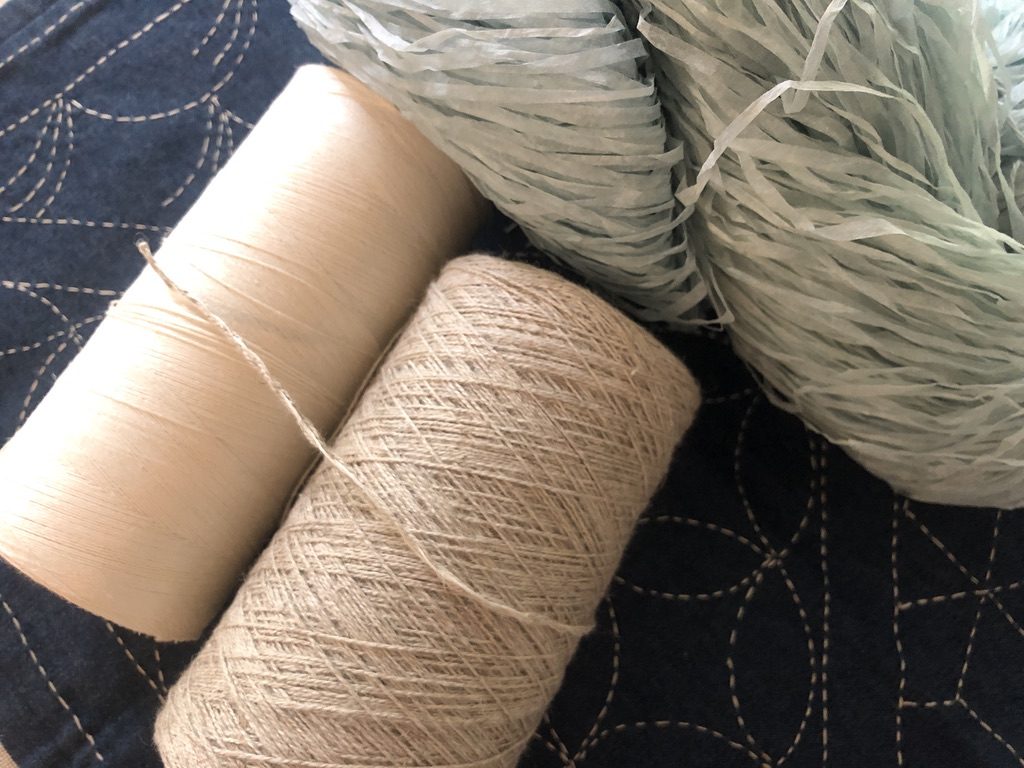
And here is the draft. I did a bit of searching for a Greek ‘meander’ pattern, without much luck. And I tried designing my own, but found I needed more than 8 shafts, and I had uncomfortably long floats. When I get this excited to begin a project I am not one for sticking with the design process. I want a solution right now! In the long run, I’ve found something in Strickler (#365). The Greek key is on an angle because the structure is a twill. The pattern requires 16 treadles, which is not a problem since I’ll be using the Baby Wolf combby to weave. If I could have designed a Greek meander pattern that didn’t have such long floats, I would have been willing to put this project on my 16S AVL. But to find an 8S pattern with short floats is the better choice.
Here is my draft:
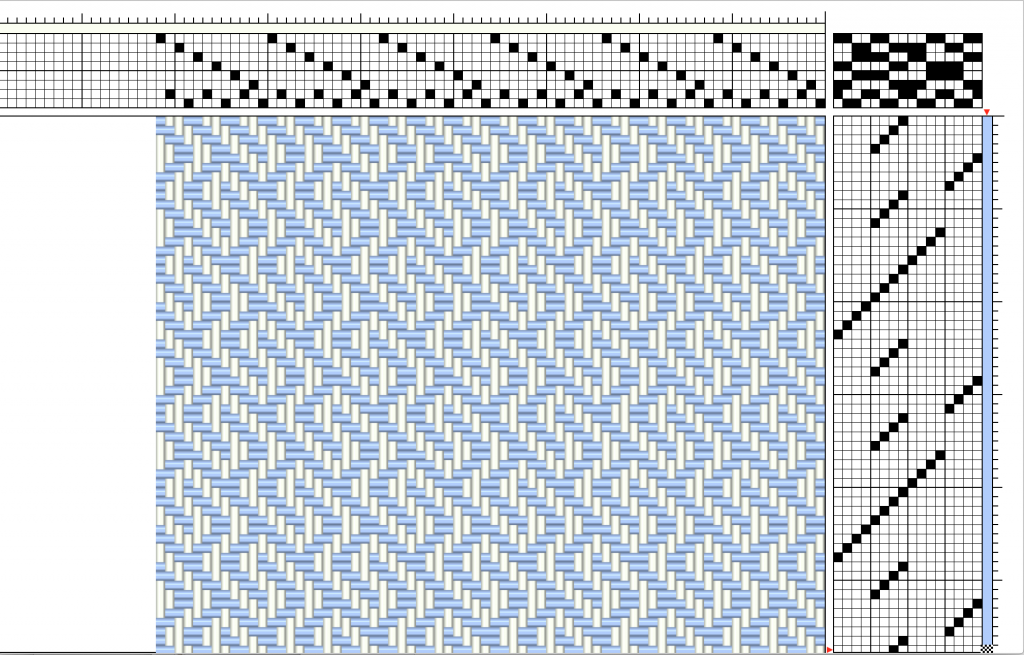
If you are tempted by this pattern and don’t have 16 treadles or a desire to figure out a skeleton tie-up, take a look at #367 which is quite similar and only requires 8 treadles.
I don’t know when I’ll make the warp. I am tentatively planning a week or two away at the beginning of next week. This week I am supposed to be putting final edits into a book I volunteered to produce years ago. It’s been a long project that is finally reaching its end. I need to discuss that in another post. Yet I’d love to have a new paper yarn project on the loom before I leave, waiting for me to begin weaving when I return. Wouldn’t that be nice?

